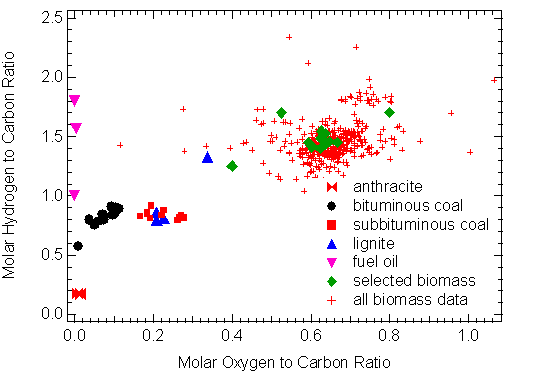|
|
|
Most of the technical issues in combining biomass with coal for cofiring are related to fuel properties. Biomass differs from coal in many important ways, including the organic, inorganic, energy content, and physical properties. Relative to coal, biomass generally has less carbon, more oxygen, more silica and potassium, less aluminum and iron, lower heating value, higher moisture content, and lower density and friability. Quantitative examples of these trends are illustrated by the links to the left.

This diagram illustrates how biomass can be viewed as an extension of coal in a generalized coalification diagram. That is, the highest rank coals are those closest to the origin of this diagram, with an obvious progression through coals, lignites, and finally biomasses. The specific data indicated here are selected from those that have been tested in the MFC. Most practical biomass fuels are clustered reasonably closely as indicated. There are important differences between biomass and coal that are not indicated on this figure, specifically in chlorine, nitrogen, sulfur, and inorganic chemistry.
|
|
|
